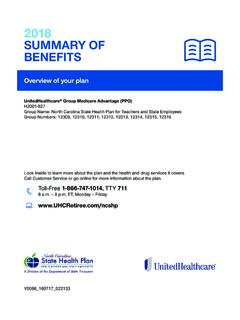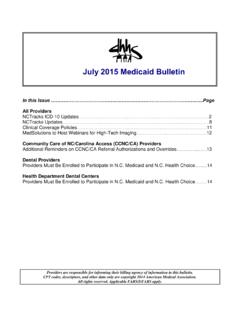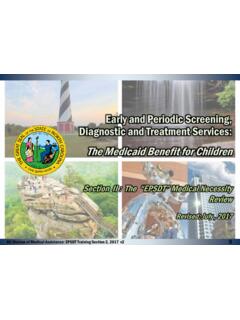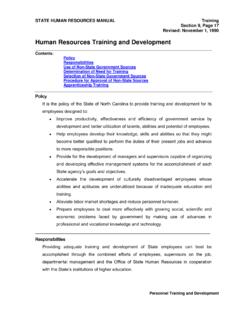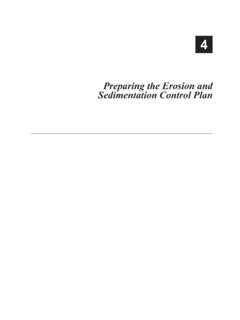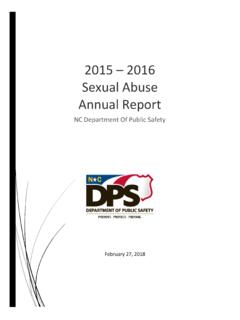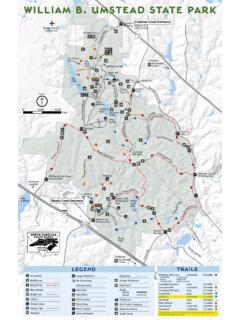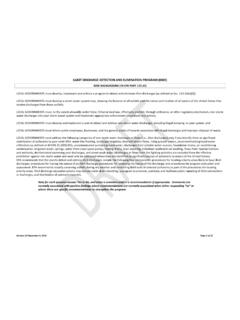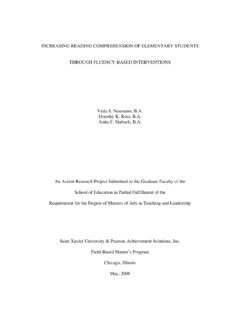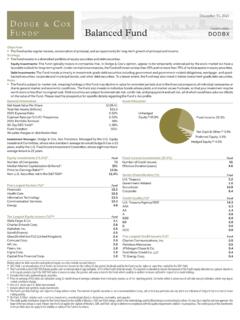Transcription of 3-5 Mathematics North Carolina Standard Course of Study ...
1 3-5 Mathematics 1 North Carolina Standard Course of Study Third grade Mathematics standards for Mathematical Practice 1. Make sense of problems and persevere in solving them. 2. Reason abstractly and quantitatively. 3. Construct viable arguments and critique the reasoning of others. 4. Model with Mathematics . 5. Use appropriate tools strategically. 6. Attend to precision. 7. Look for and make use of structure. 8. Look for and express regularity in repeated reasoning. Operations and Algebraic Thinking Represent and solve problems involving multiplication and division. For products of whole numbers with two factors up to and including 10: Interpret the factors as representing the number of equal groups and the number of objects in each group.
2 Illustrate and explain strategies including arrays, repeated addition, decomposing a factor, and applying the commutative and associative properties. For whole-number quotients of whole numbers with a one-digit divisor and a one-digit quotient: Interpret the divisor and quotient in a division equation as representing the number of equal groups and the number of objects in each group. Illustrate and explain strategies including arrays, repeated addition or subtraction, and decomposing a factor. Represent, interpret, and solve one-step problems involving multiplication and division.
3 Solve multiplication word problems with factors up to and including 10. Represent the problem using arrays, pictures, and/or equations with a symbol for the unknown number to represent the problem. Solve division word problems with a divisor and quotient up to and including 10. Represent the problem using arrays, pictures, repeated subtraction and/or equations with a symbol for the unknown number to represent the problem. Understand properties of multiplication and the relationship between multiplication and division. Solve an unknown-factor problem, by using division strategies and/or changing it to a multiplication problem.
4 Multiply and divide within 100. Demonstrate fluency with multiplication and division with factors, quotients and divisors up to and including 10. 3-5 Mathematics 2 Know from memory all products with factors up to and including 10. Illustrate and explain using the relationship between multiplication and division. Determine the unknown whole number in a multiplication or division equation relating three whole numbers. Solve two-step problems. Solve two-step word problems using addition, subtraction, and multiplication, representing problems using equations with a symbol for the unknown number.
5 Explore patterns of numbers. Interpret patterns of multiplication on a hundreds board and/or multiplication table. Number and Operations in Base Ten Use place value to add and subtract. Add and subtract whole numbers up to and including 1,000. Use estimation strategies to assess reasonableness of answers. Model and explain how the relationship between addition and subtraction can be applied to solve addition and subtraction problems. Use expanded form to decompose numbers and then find sums and differences. Generalize place value understanding for multi-digit numbers. Use concrete and pictorial models, based on place value and the properties of operations, to find the product of a one-digit whole number by a multiple of 10 in the range 10 90.
6 Number and Operations Fractions Understand fractions as numbers. Interpret unit fractions with denominators of 2, 3, 4, 6, and 8 as quantities formed when a whole is partitioned into equal parts; Explain that a unit fraction is one of those parts. Represent and identify unit fractions using area and length models. Interpret fractions with denominators of 2, 3, 4, 6, and 8 using area and length models. Using an area model, explain that the numerator of a fraction represents the number of equal parts of the unit fraction. Using a number line, explain that the numerator of a fraction represents the number of lengths of the unit fraction from 0.
7 Represent equivalent fractions with area and length models by: Composing and decomposing fractions into equivalent fractions using related fractions: halves, fourths and eighths; thirds and sixths. 3-5 Mathematics 3 Explaining that a fraction with the same numerator and denominator equals one whole. Expressing whole numbers as fractions, and recognize fractions that are equivalent to whole numbers. Compare two fractions with the same numerator or the same denominator by reasoning about their size, using area and length models, and using the >, <, and = symbols. Recognize that comparisons are valid only when the two fractions refer to the same whole with denominators: halves, fourths and eighths; thirds and sixths.
8 Measurement and Data Solve problems involving measurement. Tell and write time to the nearest minute. Solve word problems involving addition and subtraction of time intervals within the same hour. Solve problems involving customary measurement. Estimate and measure lengths in customary units to the quarter-inch and half-inch, and feet and yards to the whole unit. Estimate and measure capacity and weight in customary units to a whole number: cups, pints, quarts, gallons, ounces, and pounds. Add, subtract, multiply, or divide to solve one-step word problems involving whole number measurements of length, weight, and capacity in the same customary units.
9 Represent and interpret data. Represent and interpret scaled picture and bar graphs: Collect data by asking a question that yields data in up to four categories. Make a representation of data and interpret data in a frequency table, scaled picture graph, and/or scaled bar graph with axes provided. Solve one and two-step how many more and how many less problems using information from these graphs. Understand the concept of area. Find the area of a rectangle with whole-number side lengths by tiling without gaps or overlaps and counting unit squares. Relate area to the operations of multiplication and addition.
10 Find the area of a rectangle with whole-number side lengths by tiling it, and show that the area is the same as would be found by multiplying the side lengths. Multiply side lengths to find areas of rectangles with whole-number side lengths in the context of solving problems, and represent whole-number products as rectangular areas in mathematical reasoning. Use tiles and/or arrays to illustrate and explain that the area of a rectangle can be found by partitioning it into two smaller rectangles, and that the area of the large rectangle is the sum of the two smaller rectangles. 3-5 Mathematics 4 Understand the concept of perimeter.
